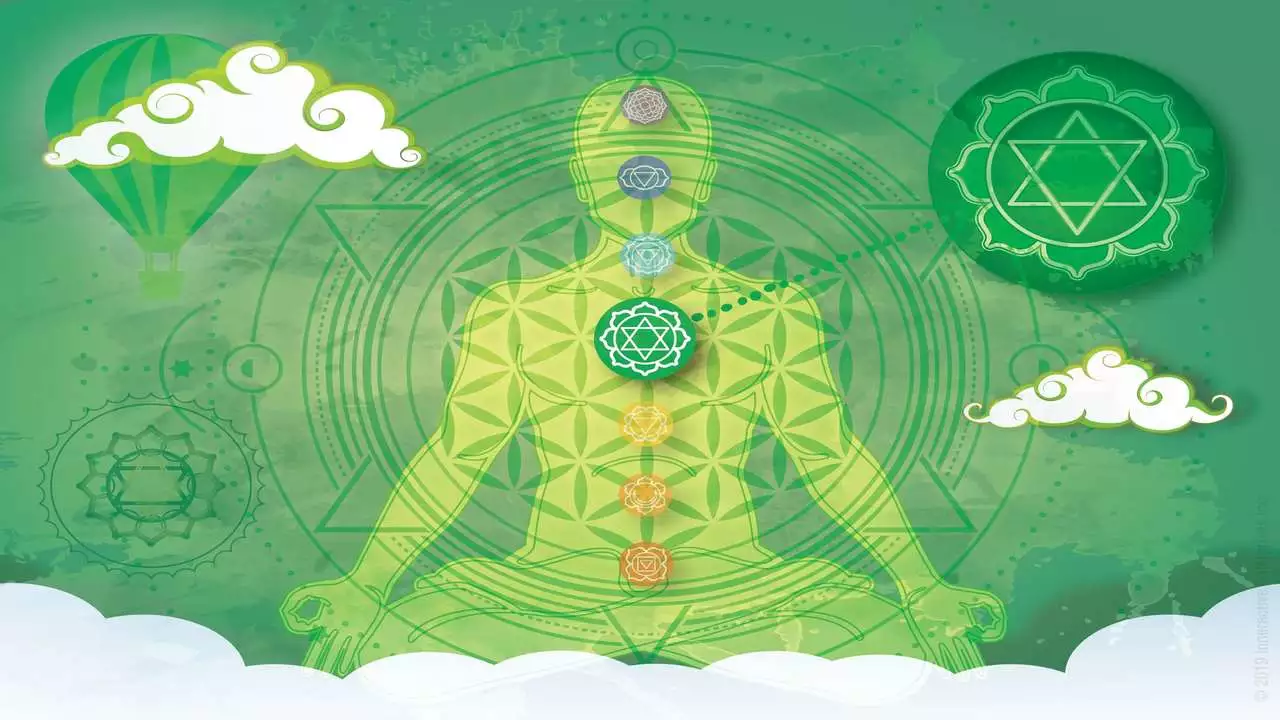The Five Yamas of Yoga: Definition & Practice Tips
At the beginning of Patanjali’s eight-fold path of yoga lays the Yamas: the moral, ethical and societal guidelines for the practicing yogi. These guidelines are all expressed in the positive, and thus become emphatic descriptions of how a yogi behaves and relates to her world when truly immersed in the unitive state of yoga. While we may not strive to reach such a pure state ourselves, the Yamas are still highly relevant and valued guides to lead a conscious, honest and ethical life.
Patanjali considered the Yamas the great, mighty and universal vows. He instructs us that they should be practiced on all levels (actions, words, and thoughts) and that they are not confined to class, place, time or concept of duty (YS 2.31).
Viewing ads supports YogaBasics. Remove ads with a membership. Thanks!
The Five Yamas of Yoga
- Ahimsa is the practice of non-violence, which includes physical, mental, and emotional violence towards others and the self. We create violence most often in our reactions to events and others, habitually creating judgment, criticism, anger or irritation. I have found the Buddhist practice of compassion to be an excellent tool to foster non-violence in my life. Compassion is the ability to accept events as they are with an open and loving heart. It is a letting go of reacting to a situation in a conditional and negative way and replaces those thoughts or feelings with kindness, acceptance, and love. At first practicing compassion is hard, frustrating and not fun. But the key is to have compassion for oneself for not having compassion and to smile at this contradiction.
- Satya (truthfulness) urges us to live and speak our truth at all times. Walking the path of truth is a hard one, especially while respecting Patanjali’s first Yama, Ahimsa. Since Ahimsa must be practiced first, we must be careful to not speak a truth if we know it will cause harm to another. Living in your truth not only creates respect, honor, and integrity but also provides the vision to clearly see the higher truths of the yogic path.
- Asteya (non-stealing) is best defined as not taking what is not freely given. While this may on the surface seem easy to accomplish, when we look further this Yama can be quite challenging to practice. On a personal level the practice of Asteya entails not committing theft physically and/or not causing or approving of anyone else doing so–in mind, word, or action. On the level of society, Asteya would be in opposition to exploitation, social injustice, and oppression. While not easy, practicing Asteya encourages generosity and overcomes Lobha (greed). And as Patanjali tells us, “when Asteya is firmly established in a yogi, all jewels will become present to him/her.” (YS 2.37).
- Brahmacharya (continence) states that when we have control over our physical impulses of excess, we attain knowledge, vigor, and increased energy. To break the bonds that attach us to our excesses and addictions, we need both courage and will. And each time we overcome these impulses of excess we become stronger, healthier and wiser. One of the main goals of yoga is to create and maintain balance. And the simplest method for achieving balance is by practicing Brahmacharya, creating moderation in all of our activities. Practicing moderation is a way of conserving our energy, which can then be applied for higher spiritual purposes.
- Aparigraha (non-coveting) urges us to let go of everything that we do not need, possessing only as much as necessary. The yogis tell us that worldly objects cannot be possessed at all, as they are all subject to change and will be ultimately destroyed. When we become greedy and covetous we lose the ability to see our one eternal possession, the Atman, our true Self. And when we cling to what we have we lose the ability to be open to receive what we need.
Tips for practicing the Yamas
Simply by contemplating the Yamas, we begin to practice them. Yet, the daily practice of aligning our thoughts, behaviors, and actions with these moral, ethical and societal guidelines can be arduous and challenging. Ideally, practicing the Yamas should be approached slowly over many years and should be combined with a dedicated Hatha yoga practice. It is recommended to practice applying the Yamas to your life using a structured methodology like the seven steps below.
-
 Start with only one Yama. Begin by reading, understanding and contemplating each of the five Yamas. As you contemplate how each Yama would unfold in your current life, notice your thoughts and emotional reactions to making changes to support each one. You will likely find one or two Yamas that have a strong charge for you. Depending on the amount of inner strength and community support you have, you may decide to start with the most charged one or leave those for later. Make a clear and conscious choice to dedicate yourself to practicing this Yama over a set period of time. A good place to start is committing to 40 days of practice.
Start with only one Yama. Begin by reading, understanding and contemplating each of the five Yamas. As you contemplate how each Yama would unfold in your current life, notice your thoughts and emotional reactions to making changes to support each one. You will likely find one or two Yamas that have a strong charge for you. Depending on the amount of inner strength and community support you have, you may decide to start with the most charged one or leave those for later. Make a clear and conscious choice to dedicate yourself to practicing this Yama over a set period of time. A good place to start is committing to 40 days of practice. - Start practicing your Yamas on your mat. Begin to practice the awareness and skillful effort of your chosen Yama on your yoga mat. Use your Yama as the intention or Sankalpa of your practice and let it be the guiding force to how you engage with the breath and the body as you flow from pose to pose. Do not judge when you fail at your attempts, simply vow to try again. Be patient, kind and compassionate but also dedicated, willful and focused.
- Reflect and track your progress. Keep a journal or find another method of tracking your commitment and progress. It is quite possible that you will encounter epiphanies or discover powerful insights that will be helpful to document. Reflection and contemplation of your experiences with practicing the Yamas will also be helpful to further integrate them into your yoga practice and life.
- Deepen your observation and exploration. As you continue to focus on a Yama while you move through your yoga or meditation practice you will begin to notice patterns and habits to your thoughts and emotions. Spend some time in contemplation to pull on the threads of these patterns to see if you can discern where they originate from. These patterns will most likely be originating from a Samskara, a deeply rooted wheel of suffering. Yamas are a powerful tool to shine the light of awareness to these dark and murky areas of the self and to help reprogram our Samskaras.
- Take your Yama off of your mat. Once you are comfortable and competent in using your chosen Yama in your yoga or meditation practice, you can begin to practice it in your day-to-day life. As you move out of the controlled and defined environment of your practice, you may feel like you are regressing in your progress. Note any aspects of your life (work, family, relationships, health, money, etc.) that appear to be the kryptonite to your Yama. If this area is too challenging or overwhelming, give yourself permission to apply your Yama after you have had success in the other aspects of your life.
- Commit to the next Yama. Once you feel the challenge and charge of practicing your Yama has diminished it may be time to commit to another one. As your inner awareness strengthens you may be able to take on more than one Yama at a time, but it is still advised to not rush the practice of the Yamas. Before you take on a new one, you may want to reflect on your past experience and decide on any changes or refinements to your approach.
- Keep peeling the onion. The Yamas are considered a vow you make for the entirety of your yoga practice. Practicing them will get easier over time, but you will probably find that each Yama has several different layers of practice and discovery. You may choose how deeply and completely you practice each one—only fully committed enunciates should vow to practice the Yamas fully and completely. Continuing to peel back the layers of each Yama will deepen your inner-transformation, strengthen your awareness, and purify your heart and mind.
- Move on to the next limb. The Niyamas are the next limb in Patanjali’s eight-fold path of yoga, and thus the next obvious step towards progressing along this path. The Niyamas are five internal practices or observances. These practices shift the focus from external ethical codes of conduct in the Yamas to the yogi’s internal environment of body, mind, and spirit.
Goals of the Yamas
In a practical sense, practicing the Yamas eliminates or reduces the accumulation of bad karma as well as prevents the draining of our energy when we lead a false and/or unconscious life. When we practice the Yamas we are striving towards living a healthier, holier and more peaceful life and at the same time we strengthen our powers of awareness, will and discernment. The more we cultivate conscious and skillful action, the easier it will be to navigate strong emotions and negative thought patterns—and much less likely to act from unconscious programming.
Engaging in these practices is not an easy task, yet by doing so we fortify our character, improve our relationships with others, and further our progress along the path of yoga.
Books to study and practice further
Patanjali’s Yoga Sutras and the Yamas and Niyamas are rich philosophical subjects that can be explored and practiced in great depth. If you are ready to study and dive deeper into these practices, consider reading one or more dedicated books on the subject. Below are our recommendations for you to check out to learn more:






